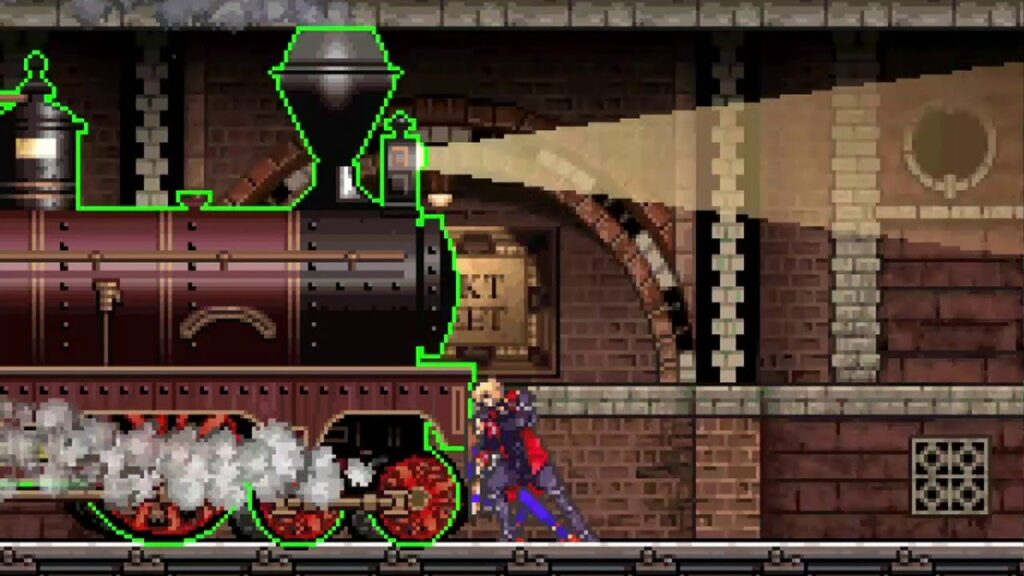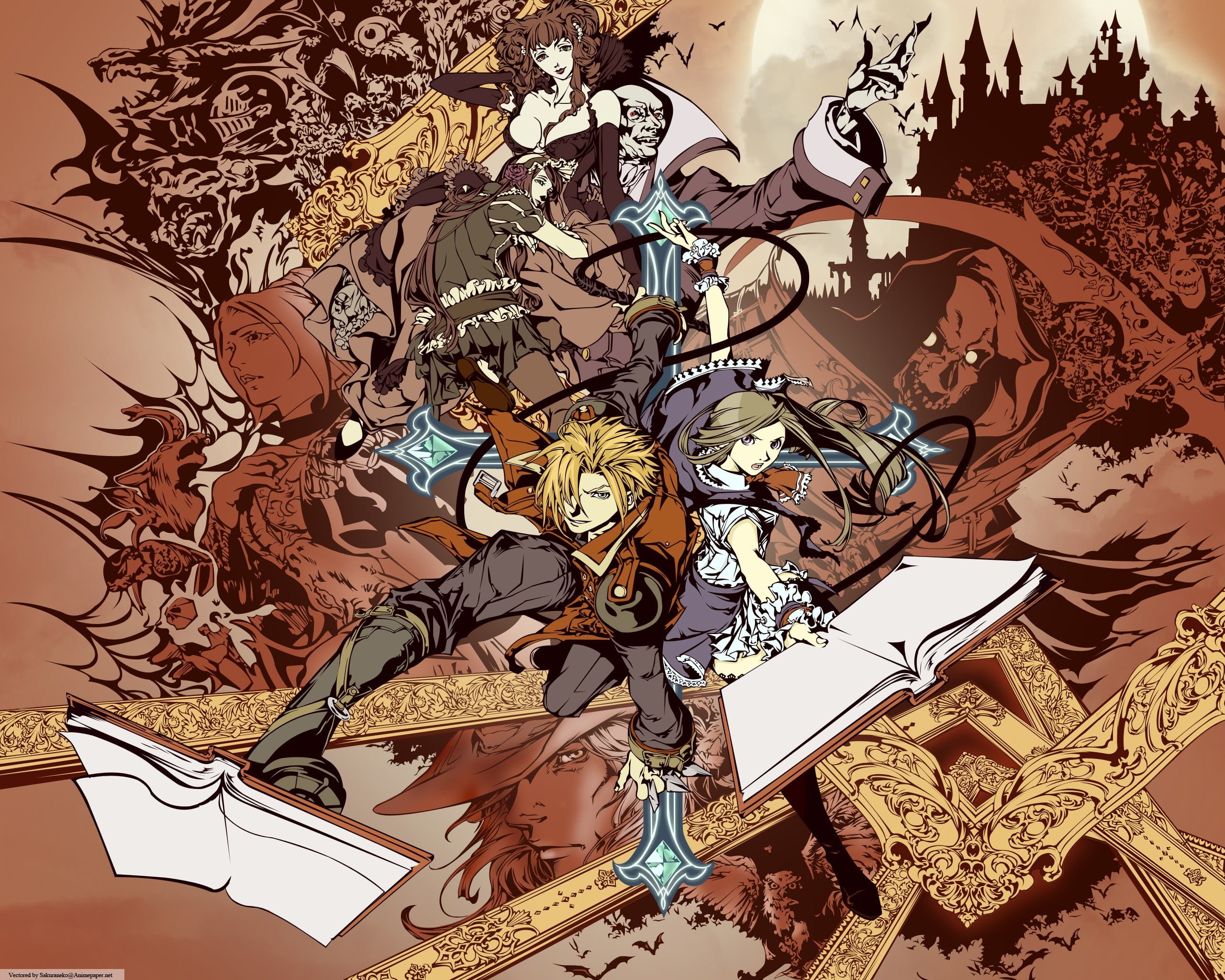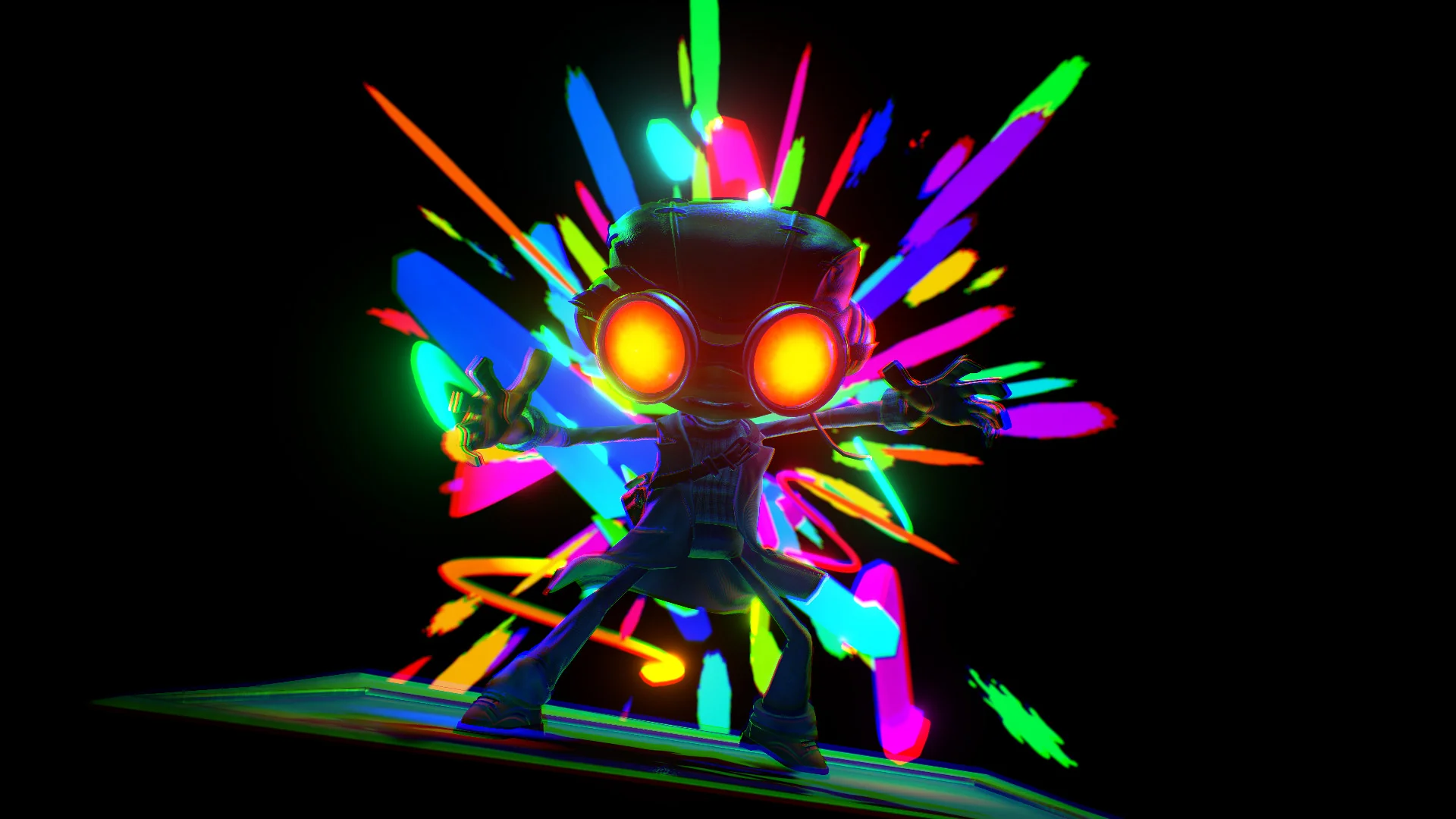Konami’s distancing themselves from active videogame development left an enormous hole in a lot of fans’ hearts. The company, which had been in the scene for decades up to that point, with a colorful history of arcade and console classics, was done actively releasing games for their most popular franchises in favor of turning their attention to other areas of Japanese entertainment, like pachinko and even gyms and health clubs, of all things. Players around the world mourned the loss of new entries in their favorite franchises, and none probably did so so loudly as followers of Castlevania.
The series up to that point had been getting consistent releases on a near yearly basis, and regardless of their success both critically and sales-wise, as it’s expected when there’s an abundance of riches, people grew to take them for granted. I know that for a fact because I was one of them. “Geez, another one of these?” was the common thought on my mind whenever I saw a review for a new entry, and promptly dismissed it. Looking back, that was incredibly dumb, knowing what I know now and how history went on to unfound in regards to Castlevania.
But let’s not dwell on my late teen/early 20’s cynicism. Instead, we should turn our attention to the fantastic games that came out during that era, the twilight years of the franchise and the last ones where Konami would have Igarashi and crew work on them. The DS-era Castlevania games were built upon the amazing foundation left by the GameBoy Advance entries, which themselves got their start by expanding on the now much threaded Symphony of the Night ground.

By now, we’re more than familiar with games that borrow from that particular landmark entry in the Castlevania series, in what critics and fans alike have adopted the portmanteau I so strongly dislike and won’t name here, but at that time, it was still a very novel concept. And it was one few developers outside of Konami were trying to nail down. It ended up falling to them to keep that train rolling, and that they did with the GBA and DS games.
Recently, mostly due to the 3DS and Wii U eShop closure, I’ve started playing games I bought over the years but have never really played much of, and with a month-long trip out of town, I decided to bring my newly-bought DSi XL and a copy of Castlevania: Portrait of Ruin. It’s a game that before this trip I had never played, but have heard so much praise for. There’s no particular reason for picking the middle one out of the three DS releases, it was completely off the cuff.
Portrait of Ruin, for those who aren’t immediately familiar with the series for whatever reason, is the second Castlevania release on DS. It followed a year later after 2005’s Dawn of Sorrow, which was very much a launch window title for Nintendo’s touch screen portable, featuring heavy use of that technology, something that this one wasn’t really worried about.
In all regards, Castlevania: Portrait of Ruin is a GBA game running off a DS card, with its map being the only thing making real use of the DS perk of, duh, having two screens, with it displayed on the top screen at all times – and no lie, it’s a goddamn handy addition, for sure, for as obvious as it is.

Having more than one playable character was nothing new to Castlevania. After all it was something that the series already had dabbled with in the past back during the NES, with Castlevania III: Dracula’s Curse, and later came back with Bloodlines on the Genesis, as well as – out of the box, mind you, the PlayStation version had to be beaten before you could play as Richter – with the Saturn version of Castlevania: Symphony of the Night. Portrait of Ruin went a step further, having two protagonists who players could interchangeably control during gameplay.
There was no need to start over a new save this time, unless you wanted to play one of the bonus characters after clearing the game. Jonathan Morris, son of Castlevania: Bloodlines’ John Morris, and Charlotte, his friend and gifted mage, were the pair of protagonists in the game. Jonathan starts off the adventure holding a grudge against his father for his harsh upbringing and for him having suddenly disappeared during it; he carries the legendary Vampire Killer whip, but can’t wield it adequately. His partner, on the other hand, is a happy-go-lucky-not-a-care-in-the-world young girl who can conjure all sorts of powerful spells off of grimoires.
On their own, they’re potentially excellent heroes to pick and have broadly different playthroughs of Portrait of Ruin, but as a unit, the amount of gameplay variety grows exponentially. Igarashi and crew expertly implemented a combo system into the game that makes it so both characters’ skills can come into play simultaneously, and depending on your choice of active abilities, their effects can be quite devastating. That and the fact that you could freely switch between them, and are given the option to have whoever is not being controlled take part in battle as an AI helper, which also came into play during a handful of puzzles.

Interestingly, up to that point, the most recent game in the series in terms of the timeline was the one that preceded it, even though it took place – at that time, anyway – far in the future, in 2036. Castlevania: Portrait of Ruin, though, is set at the later years of World War II, and it serves as both an epilogue and sequel to Bloodlines, as it *SPOILERS* reveals the fate of Eric Lecarde, the second playable character from that game, as well as Jonathan father’s *SPOILERS*.
Before these games, there were no entries that took place at as decidedly familiar periods like the ones seen here, but sequels, yes, they happened before and were awesome in the way they were done, especially so with Symphony of the Night and it starting at the tail-end of Rondo of Blood, and its iconic exchange between ol’ Drac and Richter. So cool! And cheesy!
Shifting back to gameplay. The portraits from the title of the game come into play as excuses for it to feature environments outside of the castle, and work extremely well at that. Environments such as a town taken over by demons and a nightmarish upside-down circus are a few of them, and they are all very much unique in the way they serve as pocket-sized worlds you spend an hour or so dicking around before you eventually face off against the boss.
Oh, that bears mentioning that the game features RPG elements, most importantly leveling. That one in particular comes into play in those fights, often enough requiring you to grind for a little bit before they become more manageable or even possible to partake in, given that at times, you can’t even make a dent in them unless you buff up your numbers.
I find the grind not to be too much of a pain, after all I enjoy the combat in this game a whole lot, even if it’s not a whole lot different from the rest of the pack’s. That and having the map at all times teasing me to fully explore it, make the trips to the 0.01% completion nooks and crannies less of a symptom of OCD and more of something actively fun to do in between the actual progression within the game. And let’s not forget the bevvy of items deviously placed at those locations, too.

And while Portrait of Ruin feels like a follower of Symphony in the way that it delivers its castle, with its bite-sized portrait levels, that hub area as a result is very condensed and cleverly designed. Very early on you’ll just get that new locations can only be accessed once you find the needed ability, in the vein of the genre which shall not be named. But this time, though, there’s little to no wasting time trying to discover them as they’re painfully obvious and straightforward right out of the gate.
Some might call that an artificial limitation and a lack of drive from the developers in having made a place that gets players to fully explore, but I see it as an optimization. Portrait is a portable game through and through, and it works beautifully at providing a bite-sized, drop in/drop out experience. I appreciate it for what it is and for the 20-ish hours I’ve spent playing it up to this point – my system battery died and the charger is not 220v compliant, sadly – were glorious.
I’m very close to clearing this one and am anxious to do the same with the rest of the Castlevania carts that I own and have yet to finish. In that, I’m extremely curious as to how I’ll feel further down the list, once I get a few more games under my belt. Will I grow similarly tired to them as I did back when they were new? Or am I now old and mature enough to appreciate them for what they are? Then again, I could always spread them out between the rest of the DS and 3DS games on my backlog; we’ll see once I get there, I suppose.

But truth be told, the fact that the DS-era Castlevanias were underappreciated is hard to deny. I played a fair portion of Order of Ecclesia back when it was new and can safely say it’s also great, perhaps even more than Portrait of Ruin, and it’s a safe assumption that with Dawn of Sorrow it won’t be much different, so we can definitely place them among the top tier of the DS library. The question that I have, then, is whether they would be more appreciated now, decades since a new Castlevania’s been released than when they were new, back when they were a dime a dozen.
On one hand, the game space is saturated by releases based on the structure set by Symphony of the Night, while on the other, it’s been a long time since we’ve seen an actual Castlevania release outside of retro compilations. Imagine playing one of those having it be developed by Konami themselves. I’m not talking about a Castlevania in all but name like Igarashi’s Bloodstained: Ritual of the Night, which is all good and dandy on its own – I was even a part of its Kickstarter campaign, look for my name in the credits! – but an honest to god entry in the series proper.
Would that only be appreciated by the vocal minority of retro game fans like myself? That’s a question that indie devs have answered somewhat with their SOTN-inspired releases and their relative-to-exceedingly surprising success. Then again it’s still a question whose answer is left as a guess when it comes to Konami actually stepping up to the plate and releasing a new game.

And with the recent announcement of a remake of Metal Gear Solid 3: Snake Eater with Metal Gear Solid Delta, that possibility might be more than likely, something that in the past 15 or so years was unthinkable. Another question is, even if the Castlevania brand is brought back to life with a new entry, what would it be like, with everything that’s come out since its last hurrah with the DS-era titles. It’s fun to think about all the possibilities!
The only thing that I can say for sure here is that the DS Castlevanias are positively fantastic and that yes, they were taken for granted originally. The demand for games in a similar vein in the form of indie titles influenced by Konami’s classics is more than enough proof that there are a whole lot of people out there who would dig new entries in this landmark franchise. Is it enough to prompt them into releasing a new Castlevania? The answer to that question is probably no, but let’s top this off on a positive note and say probably. Better yet, hopefully, coupled with the current circumstances.
Safe to say, I’m going to keep on trucking and will get to all of the portable Castlevania games that I’m lucky to own. And if you’ll keep reading my thoughts, I’ll continue this chronicle and look into our way of thinking and ponder what could be given what we have to go on based on what’s today’s reality for the games industry and most importantly, Konami. After all, for as awful as things have been in regards to them lately, they were once freaking KONAMI. And they still own the Castlevania brand, let’s not forget.





